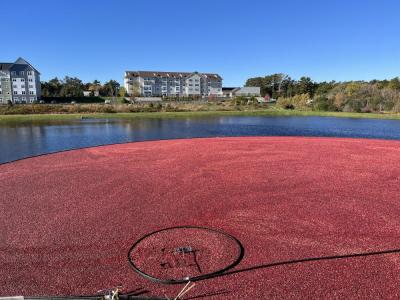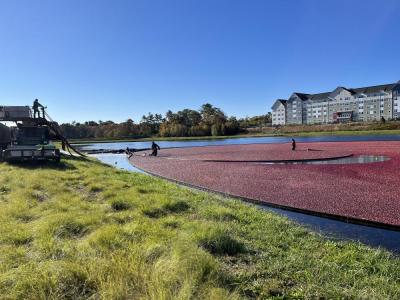Cranberry Harvest at Rosebrook Way
Ripe Stevens Cranberries floated to the top of A.D. Makepeace’s flooded bogs at Rosebrook Way on the morning of Wednesday, Oct. 19.
The Stevens variety of cranberries are bigger and brighter than the varieties sold at grocery stores, and are primarily used to make cranberry juice.
“The crop looks better than last year,” said Linda Burke, Vice President of Communications and Marketing at A.D. Makepeace.
Despite the Level Three Critical Drought this past summer, an abundance of water reservoirs throughout the property at Rosebrook Way have created adequate growing conditions for the berries.
Harvesting season began in September and will end in the first week of November for the A.D Makepeace Company. The growing process begins in the spring when the cranberries are thawed and the vines become active.
A.D. Makepeace utilizes a wet harvest approach as opposed to old fashioned dry harvesting methods. The wet harvest takes advantage of the air-filled pockets inside the fruit, allowing them to float up to the surface of the flooded bog. Then, in a process called racking, the berries are corralled to one end of the bog using a plastic barrier known as a boom.
A pipe underneath the water’s surface vacuums up the berries and transports them to the truck, where they are washed and separated from debris.
According to Burke, the wet harvest is less labor-intensive and more economically efficient than the dry harvest, which uses a machine similar to a lawn mower to pick the berries.
She said that 1,700 acres will be harvested by A.D Makepeace this year, producing anywhere between 350,000 and 400,000 barrels of berries.
Since cranberry farming is a relatively small industry, large manufacturing companies do not produce the machines used for the process. Instead, growers build the machines themselves.
“Every year there is a different way of doing things,” Burke said, “a combination of time-honored techniques and new technology.”



.jpeg)











